Ventech China Insights | Decoding of the U.S. Health Insurance Leader - UnitedHealth
INTRODUCTION
UnitedHealth, "the largest commercial health insurance company in the United States"and "ranking 8th of Fortune 500 in 2021," was founded in 1973 and went public in 1984.
Now in its 47th year, it has become a health insurance giant that rakes $260 billion in annual revenue. What does it rely on? How did it get to where it is today?
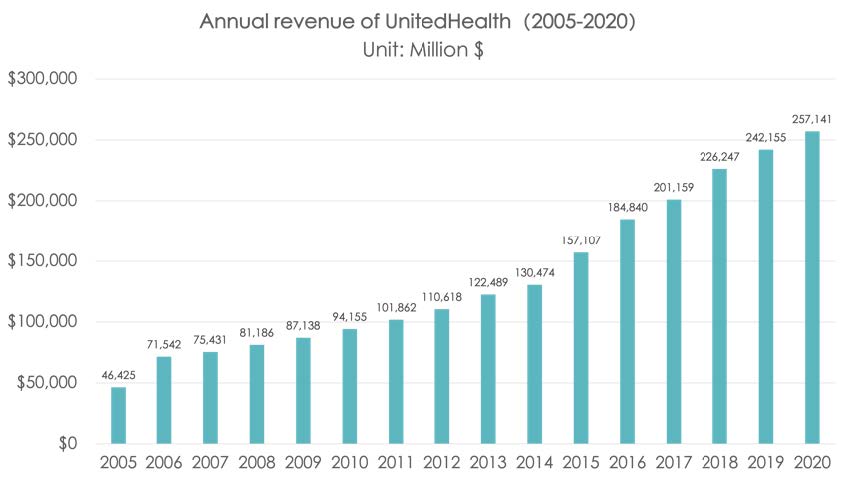
First, let's take a brief look at UnitedHealth's revenue composition, which comes fromtwo different segments:
The health insurance business (UnitedHealthcare) and the health management business (Optum), in 2020, UnitedHealthcare has achieved operation revenue of $2008.75 billion and Optum has achieved operation revenue of $138.108 billion, a revenue ratio of about 6:4, and the gap is narrowing.
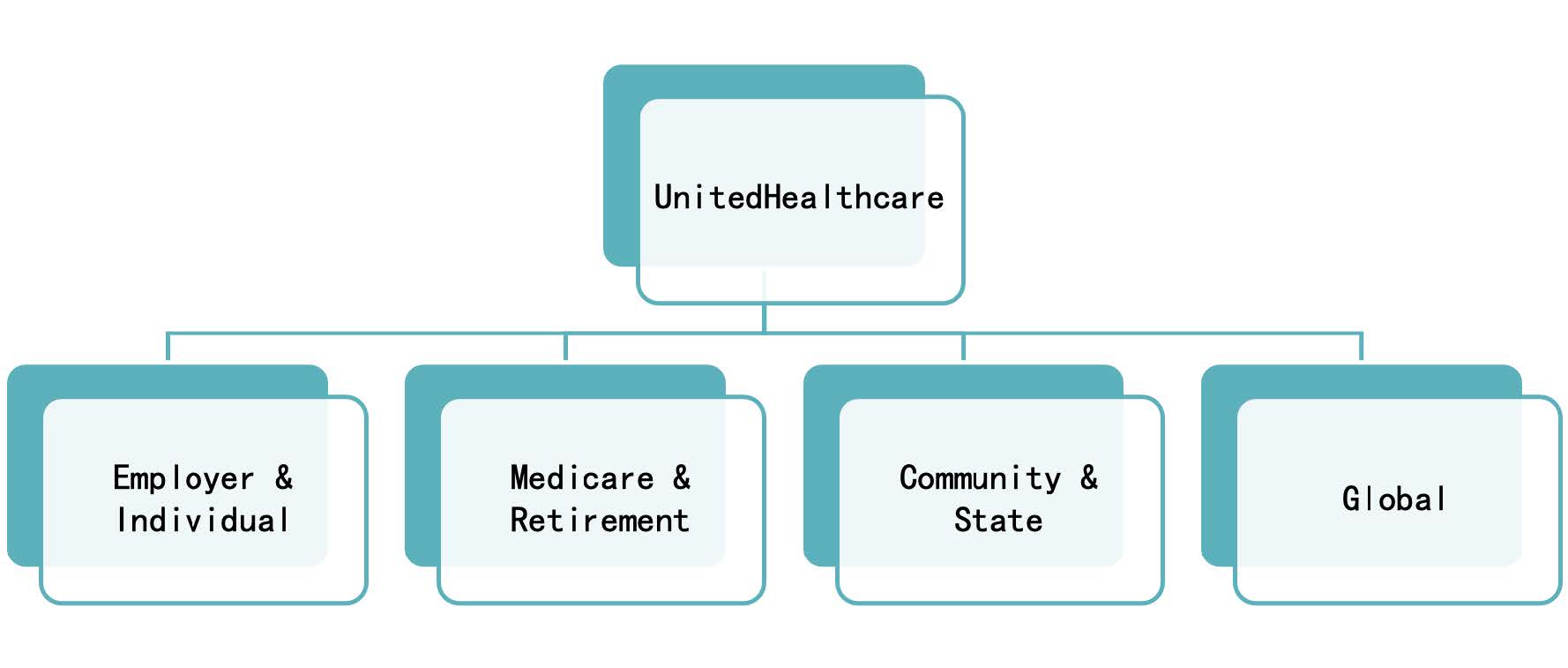
UnitedHealthcare has four business modules based on different types of customers,among which Medicare & Retirement is UnitedHealth Group's top health insurance operation revenue business unit, accounting for 45.18% of health insurance business total revenue. The business serves seniors aged 50 and above through its partnership with AARP and the Centers for Medicare & Medicaid Services (CMS).
The Health Services business segment (Optum) consists of three main business lines.
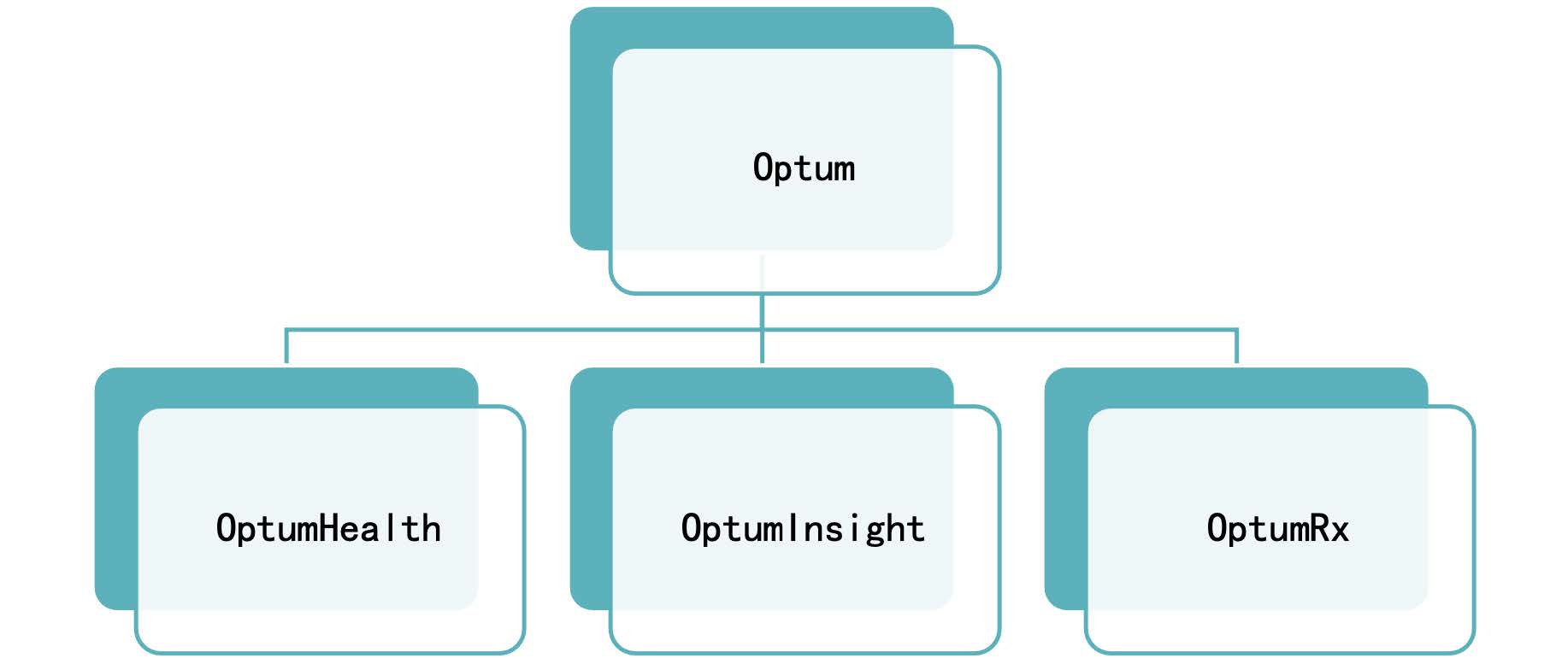
1) OptumHealth focuses on providing healthcare services and health- related financial services to group clients.
2)Optumlnsight focuses on providing data support, medical information service systems, data management and consulting services to hospitals, insurance agencies, governments, biotechnology companies, and other organizations.
3)OptumRx is part of the pharmacy benefit management (PBM) business, which is the efficient management of drug costs through the organizational coordination of insurance companies, pharmaceutical manufacturers, hospitals, and pharmacies.OptumRX has a drug distribution system covering 66,000 pharmacies and two post
office systems, as well as a back-office support system connecting hospitals, pharmacies and insurance company.
The historical background as well as the business thinking behind the physician organization startup that has soared all the way to evolve into such a huge group with complex business lines and a market capitalization of $400 billion is intriguing, and would be analyzed below as both external and internal factors.
Where lies the brass ring?
The lack of public health insurance in the U.S. created the prosperity in the commercial health insurance market, and UnitedHealth was founded in the year of the enactment of HMO Act, thus its insurance plans were well supported by the policy, made it stood firmly on the cusp. The combination of these two factors has created an excellent backdrop for UnitedHealth's growth.
- the compliment of public health insurance: Prosperity of commercial insurance industry
In the U.S., the main public health insurance programs target children, the poor and the elderly over 65 years old. For U.S. citizens aged 19-65, there is a significant gap in this field. With Social Security coverage at 20.8% by 2020 Q2, well below the average coverage level of 37.9%, it is supplemented by the extremely well-developed
commercial health insurance. As of 2020, health insurance coverage in the U.S. is shown below. Those participating in commercial insurance accounted for 62.2% of the total population and public health insurance covered only 37.9% of the total population. There are still 9.4% of U.S. citizens who are not covered by health
insurance.
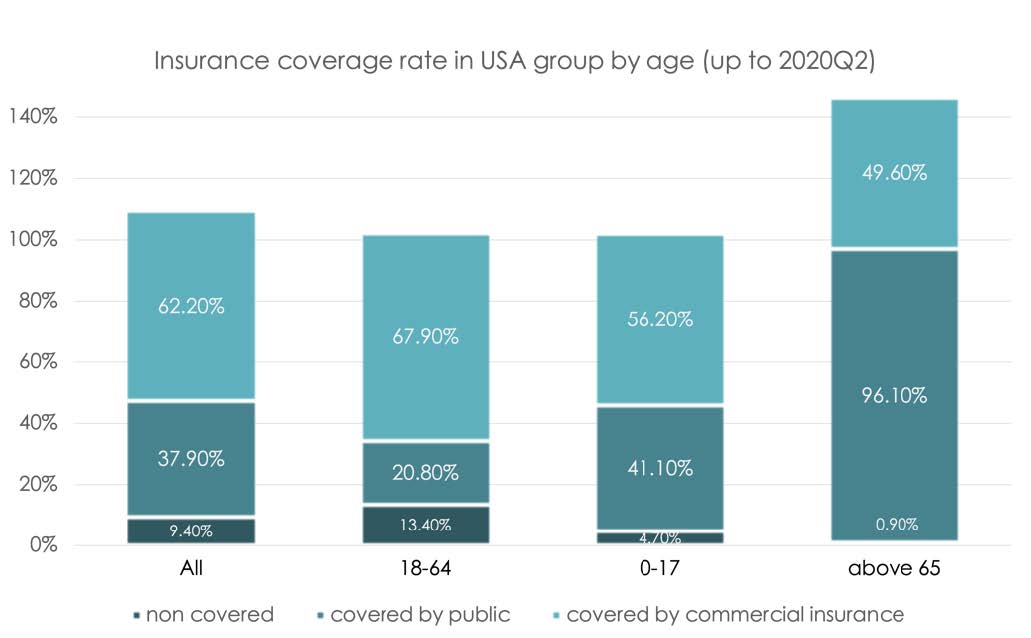
- The managed care insurance boom in its initial stage
UnitedHealth is also a 100% managed care organization, which dominates the U.S. commercial insurance market, with a 75.4% penetration rate in the overall health insurance market and a 99.1% share in commercial health insurance.
What is managed care?
In essence, managed health insurance is a health care model that integrates health care delivery, business and management, characterized by the direct involvement of insurance organizations in the management of health care providers with the aim of reducing unnecessary health care costs.
Under the traditional health insurance model, insurance company is in third party position, only after the client receives health care services could he pay the fee passively, which inevitably leads to uncontrolled medical costs.
In managed care insurance, the medical service provider accepts a significant portion of the financial risk when he agrees to be responsible for meeting the entire cost of a client's care for a pre-agreed amount of fixed expense. Thus, for a hospital to be profitable, it must reduce unnecessary expenses at each step of the
process.
Over time, managed care has evolved into many different models, but one of the first to be developed and pushed by the government was the Health Management Organization (HMO) model:
After the government introduced the Medicare and Medicaid programs in 1965,fees for medical services and operating frequency for medical care continued to increase. The rising government Medicare spending drew the attention of the U.S. Congress, and Nixon’s administration advisors engaged in discussions with Paul M. Ellwood, Jr, the originator of the HMO concept, to try to find ways to curb medical inflation. In 1973, HMOs were pulled to the center stage of history with the enactment of the Health Management Organization Act, which
emphasized three main points.
1) The federal government could provide subsidies and loans for planning, operating, and expanding HMOs
2) The federal government's decree supersedes state laws that restrict the development of HMOs
3) Companies with 25 or more employees were required to offer at least one federally certified HMO health plan in addition to traditional health insurance.
This was the same year that Paul M. Ellwood, Jr., and a group of physicians established the predecessor of United Health: Charter Med Incorporated in the HMO model.
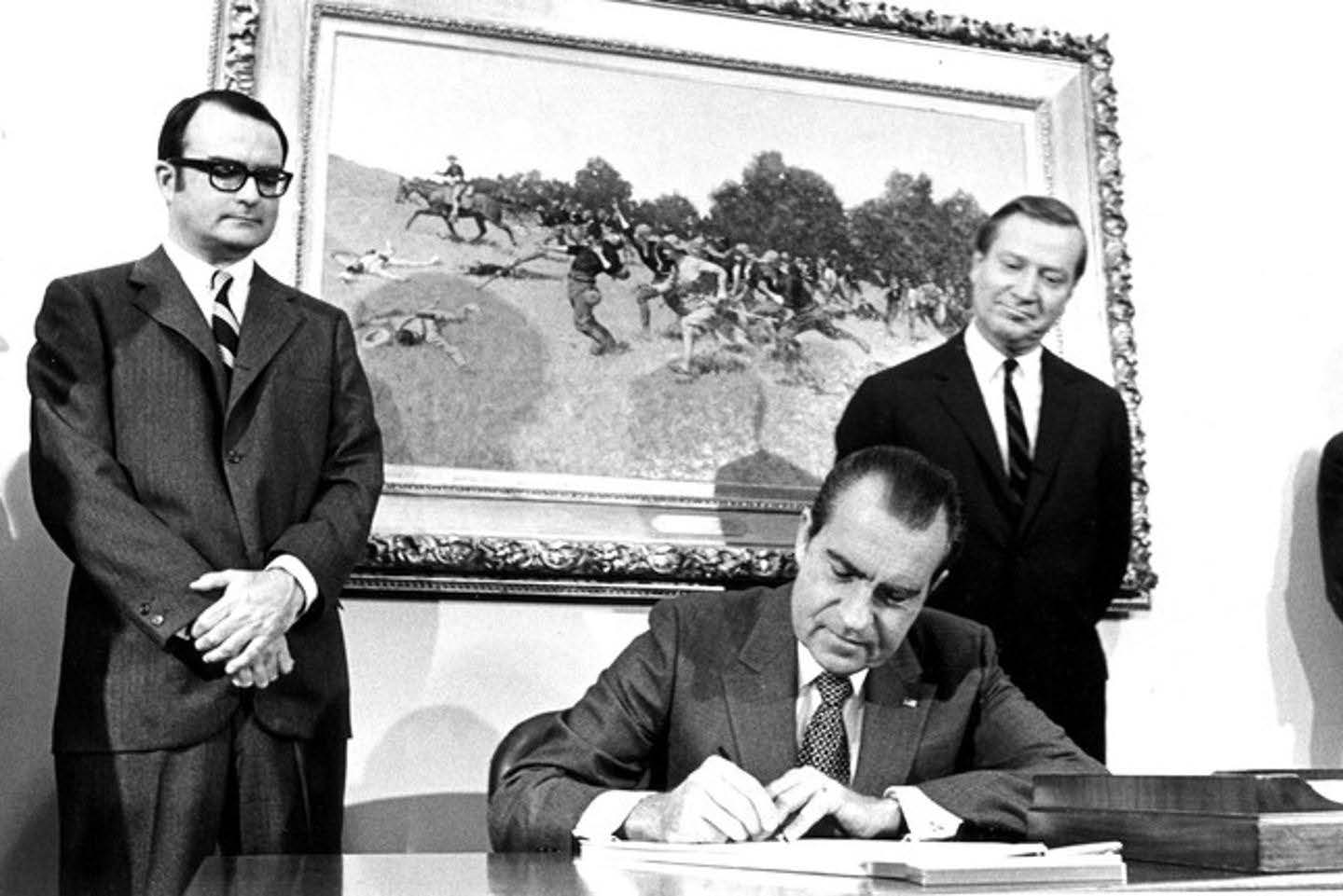
The situation in China is actually similar to that of the United States of late 1970s:since the new medical reform in 2009, medical insurance expenditures have continued to increase, and there is a serious payment crisis lurking in the long run.
Studies have shown that the employee medical insurance fund will have a serious deficit of 735.3 billion RMB by 2024.Therefore, at this stage the CBRC is focusing on improving the coverage of commercialhealth insurance, convert the concept from "insuring diseases" to "promoting health",trying to effectively control medical costs while improving the health status of the whole population and improving the experience of patients, which is more in line with the guidance of Health China 2030 and the Action Plan for Quality Development of Health
Industry.
Riding on this gust of wind, insurance companies such as China Life, Fosun United Health Insurance, Ping An Life and other insurance companies, and third-party insurance service organizations such as EHealthNow, MediTrust Health, and GhCare have begun to vigorously develop and design health insurance.
But it still can’t be won by everyone
UnitedHealth's business model forms a strong closed loop of insurance + health management+ PBM, and synergies within the group have helped UnitedHealth to increase revenue and control costs. It received strong policy support early in its establishment and quickly partnered with government programs, and its participation
in senior programs and subsequent association partnerships has provided it with a long term and steady growth in customer base. The data management engineering which it has focused on for more than 40 years has successfully helped UnitedHealth in improving user experience, regulate healthcare solutions, reduce claims rates, improve platform security and continue to expand its business scope.
- Closed loop business model
As shown in the business model above, the synergy effect is the most prominent feature of UnitedHealth's industry chain. On the one hand, UnitedHealth's insurance services provide a stable source of business for the three companies under the Optum brand.
On the other hand, Optum brand's specialization in health management, system construction and pharmaceutical services also plays a huge role in promoting the development of insurance business of UnitedHealthcare. Optum can not only enhance UnitedHealthcare's service capability and become a booster for it, but also assist UnitedHealthcare in strengthening medical behavior monitoring, effectively reducing claims costs and become a cost control system for the main insurance business.
- Collaboration with government and institutions ensures stable customer base

In 1979, UnitedHealth was federally certified to pilot a marketplace alternative to Medicare and the partnership with AARP (American Association of Retired Persons), which began in 1997, is a milestone in senior user acquisition and has directly contributed to the growth of UnitedHealthcare's Medicare & Retirement business to 8.5 million seniors. As you can see from the revenue, the steady flow of seniors from the various partnerships has consistently generated the highest percentage of revenue for UnitedHealthcare's Medicare & retirement segment and has been growing steadily for years. (Data: Bloomberg)
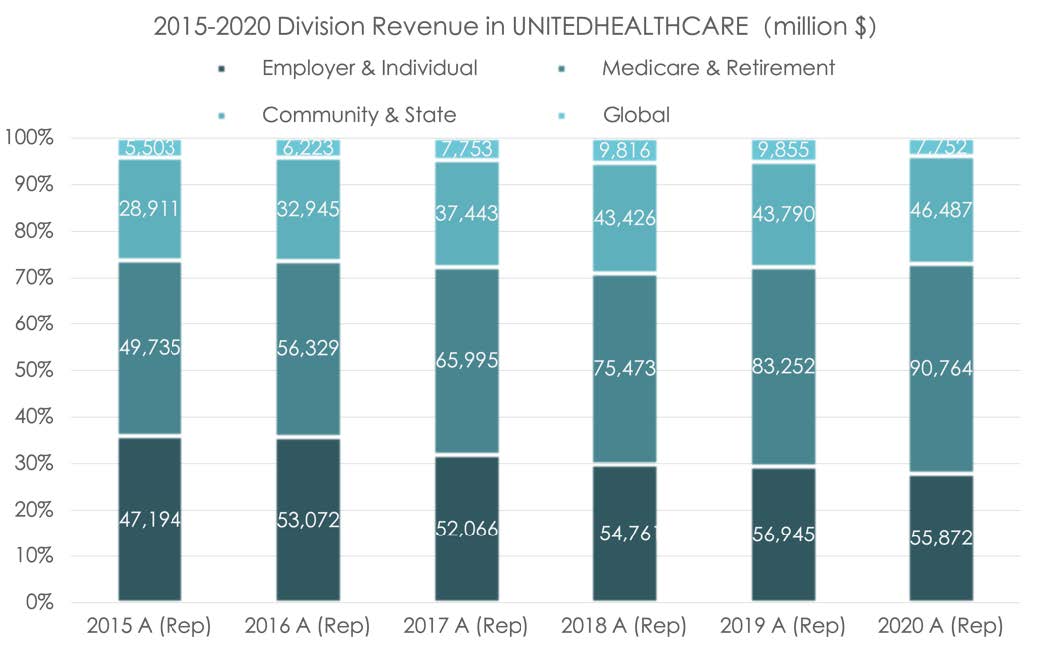
Similarly, both self-insured (fee based) and “fully insured”(risk based) plans saw significant decline in the number of enrollment during the epidemic due to rising unemployment, UnitedHealthcare still showed significant revenue gains in 2020,which can be attributed to the steady raise of the enrollment of Medicare & retirement business.
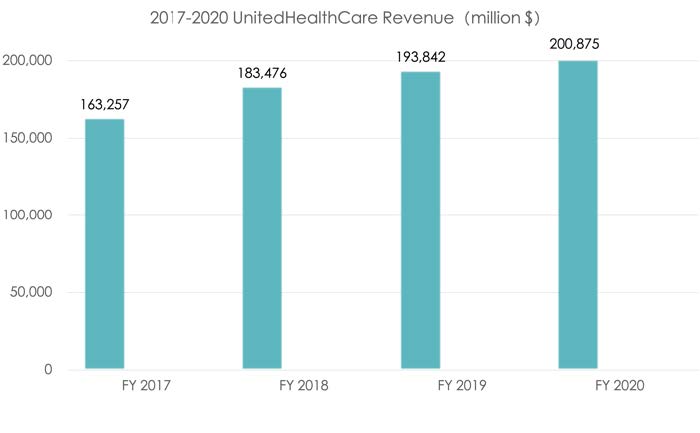
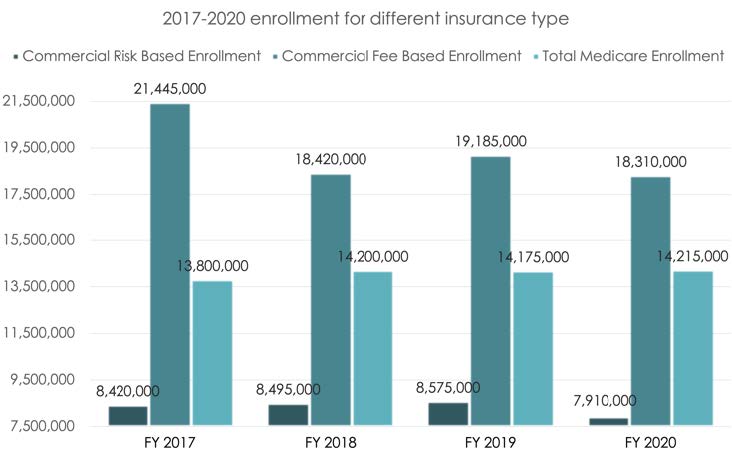
- Focus on data technological development and applications
As UnitedHealth positioned itself when it went public in 1984 - "the technology platform for the health care industry" - it was the first company who recognized that the emerging information technology would bring overturning changes to the health industry. It always strived to differentiate itself from its peers through effective data technology solutions.

Back to 1988, UnitedHealth started its own PBM business, not just for medication management, but with much greater ambition - to get ahead of the game, to control and tap into the patient’s data pool themselves.
With this goal in mind, they became the first managed health insurance organization to develop a pharmacy drug formulary, to introduce pre-certification requirements for admissions, achieved the strictest cost control for prescription drugs and treatments among any other HMO at the time.
Simultaneously, UnitedHealth Group applied data analysis technology to its business to match patients with more effective equipment and more appropriate doctors in the healthcare system, as well as to improve subsequent doctors' treatment plans based on all the treatment plans collected for the same disease group in the network, which improved recovery rates and reduced medical costs at the same time.
Then, in 2009, the eSync platform was launched to proactively manage users' health and reduce the incidence of disease. Based on health data such as somatic condition, lifestyle, and benefit records, eSync builds a health profile for users and provides them with customized health care programs. In addition, eSync can screen and automatically reach out to high-risk customers to provide them with health risk reduction plans.
The large amount of information it has on the population's health allows it to price more accurately and thus lower the claims rates. While benefiting from low claims rates,UnitedHealth has more room to compress premiums, thereby they could acquire customers and escape the "death spiral", creating a virtuous cycle and increasing
sustainability.
It is worth noting that Optumlnsight has not experienced any major data breaches since its inception, reflecting the platform’s good security, while Anthem, the second largest health insurer in the U.S., compensated victims at $115 million in 2017 for a hack that resulted in a data breach of 80 million users.
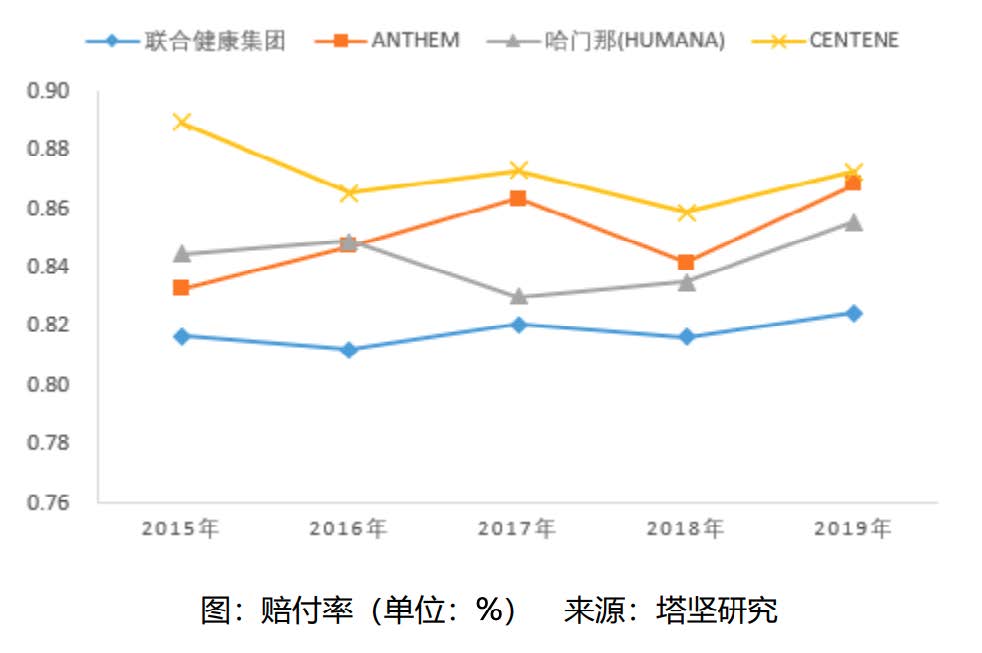
Summary
As we can see from UnitedHealth's closed-loop business, in order to truly achieve managed care, it requires a deep partnership between insurance institutions and health care providers to achieve a balance between quality and cost. However, the situation in Chinese market makes it difficult to have this kind of direct control for insurance company of healthcare service provider as in the United States, it will be more of a smallscale partnership model.
Therefore, as a commercial insurance company, if it wants to develop health insurance, it will be a huge challenge on its own professional medical knowledge and its medical resources thus it will need a medical service provider who understands the entire medical market, has professional medical knowledge, and can negotiate with hospitals to determine the specific medical plan and effectively control the cost of the plan. Such a partner should
have strong data analyzing capabilities and technical skills to effectively audit and manage related medical costs, which will significantly improve the efficiency of insurance institutions and help them to quickly develop and establish managed health insurance products, which means that third party administration companies such as EHealthNow,MediTrust Health will gradually become the prey of the capital.
